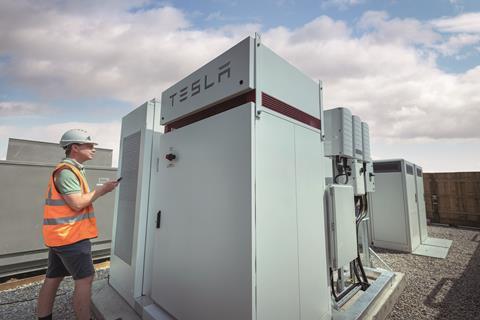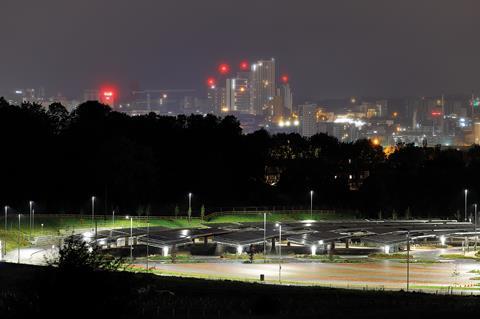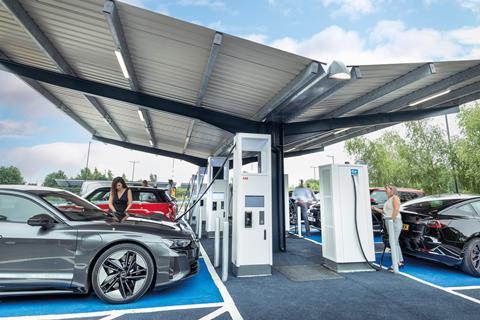With energy prices going through the roof and demand for electricity from data centres and electric vehicles soaring, the case for solar power has never been stronger – and, unlike gas, it cannot be cut off. Thomas Lane reports

Concerns about climate change, soaring energy prices and now the threat of winter blackouts mean there has never been a better time to go solar. Photovoltaic (PV) panels have been around for decades and generate power reliably all year round with virtually no need for maintenance.
The price of panels has come down by 60% since 2010 and made economic sense even without subsidy prior to the recent energy price rises. Solar deployment has been steadily increasing year on year, with 2021 being the best year since 2015, when the sector was being fuelled by generous government subsidies which are now no longer available.
Solar power contributes 4% to the UK’s power needs and, according to trade body Solar Energy UK, could nearly triple to 15% by 2030, with a peak output of 40GW. That increase in potential output is equivalent to more than 10 Sizewell C nuclear power stations. And that capacity does not have to be built exclusively on green fields – a recent report from the UK Warehousing Association says there is enough space on shed roofs for 15GW of PV capacity alone.
Typically, we would have looked at a 10-year payback for commercial systems. Now, with energy prices as they are, systems can pay back in four to five years
Jonathan Roper, principal renewable energy consultant, EvoEnergy
Energy price hikes mean that the payback period for commercial PV installations has come right down. “Typically, we would have looked at a 10-year payback for commercial systems. Now, with energy prices as they are, systems can pay back in four to five years,” says Jonathan Roper, principal renewable energy consultant for EvoEnergy, which advises on the design and installation of renewable energy systems. “It is a very easy thing to convince a board [to install solar] with energy prices where they are at the moment.” Given these favourable conditions, could we be on the cusp of a PV revolution?
Growing interest in solar
EvoEnergy reports a threefold rise in enquiries compared with this time last year. These are coming from a wide range of organisations including charities, business park and office developers, airports and public sector organisations like universities. Unsurprisingly, a common theme is that these organisations either own or have a long-term interest in their buildings.
Chris Glover, the utilities director for Buro Happold, says that although he is receiving lots of enquiries from existing clients concerned about energy price increases, there were two key drivers for PV before the energy price went up. “The first is net zero, as most developers have net zero targets that they want to achieve. And the second is grid capacity, as there is only so much power you can take from the existing infrastructure.”

Glover cites the example of power shortages in west London stymying new development because of the demand from data centres in the Thames corridor. But capacity issues extend beyond west London and can affect rural areas too. Where there are capacity constraints, developers must pay for grid “reinforcement”, which is upgrade work to increase capacity.
“If you reduce your connection size from the grid you can avoid upstream reinforcements, which can be very expensive and lengthy,” Glover explains.
In an ideal world a PV installation would closely match the power demand of end users. The reality is much more complex, as power demand fluctuates throughout the day and the amount of power produced by an installation is dependent on the amount of available light – power output drops considerably on dark, cloudy days.
This means that going off grid is not a realistic option, as an installation would need to be four to five times bigger than normal to meet peak power needs on a dark and dingy day. And it would not be possible to export surplus power at times of low demand and plenty of sunlight. Glover reckons an installation should be sized to provide 75% of demand if there is space and available capital.
Battery storage ‘game-changer’
Until relatively recently, producing surplus power was best avoided as the energy providers were paying very low rates for electricity exported to the grid. One answer is battery storage, which Glover describes as being a “game-changer”.
He explains: “The cost and availability of battery storage has come right down, and that becomes a game-changer because you can use the battery to store excess electricity and use this to minimise the times you take electricity from the grid.” He says the size of batteries has also come right down with plenty of production capacity in China.

There is a downside as the capital cost of batteries significantly extends payback times, making these less attractive to commercial organisations which are seeking a rapid payback. The economics depends on the specific circumstances of individual organisations.
A company on a commercial tariff, where prices vary throughout the day, could benefit from battery storage. “If you charge up the batteries with solar or low-rate electricity and use this power when rates are high, if that difference is big enough, this will help the batteries pay for itself,” explains Roper.
Batteries can also help to balance demand where grid capacity is constrained. EvoEnergy has installed a 110kWp PV canopy-mounted array at the Poppleton Bar park-and-ride scheme outside York. The scheme features electric car charging facilities including four 175kW ultra-rapid chargers as well as lower-output ones.

The site suffers from grid capacity constraints, so the scheme includes a 500kWh battery array which ensures sufficient power is available to meet peak loads as well as storing power generated by the PV panels. Equally, constrained grid capacity could potentially limit the size of a PV installation with batteries helping to manage the power so the grid does not become overloaded at times of peak output.
In the long term, batteries could play an important role in managing the UK’s energy needs. Loughborough University estimates that 4.4 million homes fitted with solar PV and batteries could eliminate winter peak demand on the grid on cold evenings.
Distribution centre specialist Prologis is setting up a new business unit specifically to leverage the space on its sheds for PV. The size of these installations could potentially disrupt the grid.
If you don’t utilise a smart grid, the worst-case scenario is all the chargers being on at once, which would create a massive load
Chris Glover, utilities director, Buro Happold
Simon Cox, the company’s head of project management, says electric vehicle adoption will mean demand increases overall, making careful management of available resources more critical. He reckons battery arrays could switch from storing power for use within its buildings to helping to meet peak demand which keeps the grid stable.
He says: “That is quite important as we do a wholesale transition over the next 10 to 15 years to electric vehicles. The role that businesses like ours have in keeping the grid working is going to become more important.”
Prologis is being cautious about battery technology investment for use on its sites, because the business case depends on the export prices being offered by the energy suppliers. The rates have been very poor recently, but Octopus Energy recently doubled its export price to 15p/kWh.
Although achieving parity with import prices looks unlikely, if this happened it could kill the battery market. “If you thought that grid parity was a nailed-on certainty, then you perhaps wouldn’t do the batteries,” says Cox.
Smart grids
An alternative – and complementary – way of managing power generated by PV arrays is smart grids. An example could be a business park with one utility connection, with the power to individual units managed and charged for by the park owner.
Power from PV installed on building roofs could be distributed among users according to demand, which could help to even out peaks and troughs in demand from individual buildings and allow more of the power generated by the arrays to be used on site, reducing the need to buy energy from the grid. On a basic level there are readily available, inexpensive technologies that will switch on water heaters only when there is surplus power being generated.

Glover reckons that the growth in electric vehicles and charging points, which are now mandated on new developments with parking, will drive adoption of smart grid technology. “If you don’t utilise a smart grid, the worst-case scenario is all the chargers being on at once, which would create a massive load,” he says.
A smart grid could learn the behaviour of electric car owners, including when the cars are parked, so these charged up at different times to reduce the load on the system.
Rapidly increasing demand for electricity is driving power management at a strategic level. Grid capacity constraints in west London have caused the Greater London Authority to commission the UK’s first local area energy plan for the area, which covers 10 boroughs. Arup is creating the evidence base which will form the basis for the plan.
“One of the aims is it will alleviate some of the constraints on the grid as it will identify opportunities for demand reduction, renewable generation and the roll-out of demand-side response technologies,” explains Alban Leiper, Arup’s lead on the West London Local Area Energy Plan.
Leiper adds that smart grid technology is a critical part of successful energy management. “I think renewables will play a huge role,” he says.
>>Also read: For so many reasons, we must focus on the ‘green crap’ now
>>Also read: Things can only get hotter – so we must tackle overheating in buildings
“Flexibility technologies will play an equally big role because renewable technologies need a grid connection, and it may be that these also experience difficulties getting a connection to the grid so flexibility technologies are needed to help manage the system in a smarter way to reduce peak demand and free up some headroom on the substations that are somewhat constrained.”
With the boom in PV installations, and the potential for this to increase, could getting hold of panels become a problem? EvoEnergy’s Roper says the industry is much more stable now and is enjoying organic growth compared with the turbo-charged boom induced by feed-in tariffs a few years ago.
But recent demand is impacting on supply. “We are finding that solar is getting a little more expensive at the moment; material prices have gone up, which feeds through into the supply chain,” he says, pointing out that the PV market is booming globally. “Panel availability is OK; it just takes longer to get them.”
He adds that inverter availability – devices that convert the DC current from PV panels to AC current – has been affected by the global chip shortage, an issue which also affects electrical distribution boards. But, these minor blips aside – which no one �ڶ����� spoke to thought were a serious problem – the answer to the question of whether the future is looking bright for solar is, undoubtedly, an unequivocal yes.
Why Prologis is going solar
Distribution centre developer Prologis has been installing PV arrays on its buildings for 10 years and has a current global output of 330MW. The company recently decided to dramatically expand this to help meet its 2040 net zero commitment with the goal of installing 1GW of capacity globally by 2025 and has set up a new business unit specifically to hit this target.
Simon Cox, head of project management for Prologis UK, reckons there is about 10MW of currently installed capacity, with plenty of room to expand as most of the firms buildings do not have PV installations. “We could quickly double that in the next period, and the sky is the limit in terms of where that could take us,” he says.
“At some point, I am pretty sure, all our buildings will be full of PV. The global business is preparing for that scenario in every country in the world; anything we build now will have capacity for PV.” This means that UK buildings could have 30MW of capacity by 2025 and, in the long term, up to six times more globally.

Prologis offers its building occupiers a power supply package called SolarSmart, where they sign up for the power generated by the PV for a fixed price. This protects them against future energy price rises and helps them meet their own net zero targets.
Unsurprisingly, given the current climate, firms are queuing up. “Two years ago, we were having to knock on doors; now people are ringing up and asking for it,” Cox says.
The recent price rises mean the business case for installing PV is much better, although not as good as in countries such as Germany and the Netherlands because they have better grid parity – the difference between the prices paid for exported and imported electricity is much closer.
“That means you can go bigger with the array as you don’t need to worry about how much energy gets used in the building at a given time, just the total amount used and generated as you can swap it in and out of the grid. That doesn’t work so well here,” Cox explains, adding he hopes the price disparity will narrow.
“It would be great if that could close over time, and I think it should because if we are serious about doing this as a nation, and to get renewables to really work you need it on the roof of just about every building. If we get to that point, the grid needs to be rebooted to deal with those energy flows.”
Prologis is exploring battery storage as a solution to this issue and has done a couple of pilot projects which Cox describes as working “extraordinarily well.” This included putting a 50kWp array on the 100,000ft2 building near Daventry and installing three small Tesla Powerwall batteries with a total capacity of 45kWh.
“That system has provided about 42% of the building’s energy use since we switched it on in 2018. A little can go a long with batteries.”

The company is looking at utility levels of storage, enormous batteries that would help stabilise the grid. Indeed, it is already doing this in the US, and UK energy suppliers are seeking business partners to provide grid stability services. “It’s a market we would have never looked at before as it is highly specialised, and we didn’t have an energy capability. Now we have that, it is something we are really interested in.”
Prologis is also setting up a business unit focusing on electric vehicle charging for lorries, van and cars which could be charged using solar power. Batteries could be used to store electricity and drawn upon at peak charging times to reduce the loads on the grid.
The company is already future-proofing car parks at its sites under construction by providing ducts to every space with strips between the spaces for future EV chargers should its customers opt for these. Cox says it is not worth installing solar canopies over car parking spaces in the UK, but does this in places such as Spain and Italy where shade is at a premium.
The company is also interested in truck charging and is already providing this in the US. Prologis is trying to get involved in demonstration projects as part of providing electrified corridors where trucks can charge up en route.
Cox reckons that Prologis could be offering truck charging facilities within the next year or so to its customers and third-party carriers too. This activity shows how quickly renewable energy technology is moving with benefits for everyone.



























No comments yet